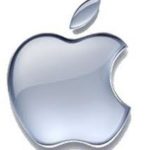Whilst 2017 is still relatively new – and before that strange phenomenon of disappearing time kicks in – let’s take a look at some of the current trends in multichannel advertising, and how this area is likely to develop during 2017.
Here are our five predictions!
1. It’s all going mobile
Hardly rocket science this one! According to a 2016 report by Price Waterhouse Coopers, mobile ad budgets increased by 56% to £1.7bn in the first six months of the year. This equates to 36p in every pound spent on internet advertising now goes on smartphones, an increase of 4p in the last five years. This growth is in step with the increasing dependence of consumers on their smartphones: 82% of owners now check their phones within an hour of waking up and 42% of owners aged 25-34 using them as their primary news source. It makes sense for advertising to follow this trend, tailoring content to where their audience actually is, rather than falling back on default assumptions. According to Tim Elkington, Chief Strategy Officer of the IAB (Interactive Advertising Bureau): “There is no hierarchy of screens anymore. It’s about which device has the right content for consumers.”
2. The immersive advertising experience
Not only is mobile the growing platform of choice, but the format of mobile advertising is changing. Adverts are increasingly becoming not just adverts but experiences. Think of 3D mobile ads, Pokemon Go and Oculus Rift for starters. These immersive advertising formats fully involve consumers in the story of an ad, over and above what they would experience from merely words or images on a screen. Whilst Virtual Reality is still in its infancy in terms of advertising, the potential for this platform is huge! It gives the consumers the ability to be in control of the ads they see and how they wish to interact with them. 2017 is likely to see significant improvements in immersive devices, as well as software.
3. Let’s talk about it!
Have you noticed how there’s something of a chatbot revolution going on?! The advancing technology of message apps has enabled the adoption of chatbots by many of the major social and messaging platforms like Facebook Messenger, Google, Microsoft Skype and Twitter DM. There are billions of daily users of messaging platforms who are now used to engaging with brands in the feeds, and are likely to be open to one on one engagement in the form of “conversational experiences.” Such experiences will bring together the best of previous ecommerce and text services, while harnessing the potential of artificial intelligence.
4. Put your money where your audience is
It makes ultimate sense, as part of a targeted digital marketing strategy, to align ad spending with where consumers spend the majority of their time and make the most of their purchasing decisions. Technology is constantly advancing and this year will enable an even greater use of data gathering and its use to inform and improve audience targeting. As time and resources are focused on specifically targeted consumers, this enables advertising to be delivered in the manner and the moments that matter most to their audience.
5. Influencer marketing
Now this is a biggie! Because influencer marketing relies on user generated content, it enables audiences to relate to this content in a more engaged and meaningful way. It logically follows that innovative brands will jump on this bandwagon and partner with influencers on YouTube, Snapchat and Instagram – perhaps even creating unique content together. Whichever way you cut it, influencer marketing can only continue to feature heavily in the digital marketing landscape this year, and building this into your multi channel advertising strategy has got to be a good thing.
So, this time next year, what will you see when you look back on the success or otherwise of your advertising performance in 2017? Taking note of the above tips and incorporating at least some of them into your multichannel advertising strategy will undoubtedly pay dividends down the line! Watch this space…
Author: Robert Walker

